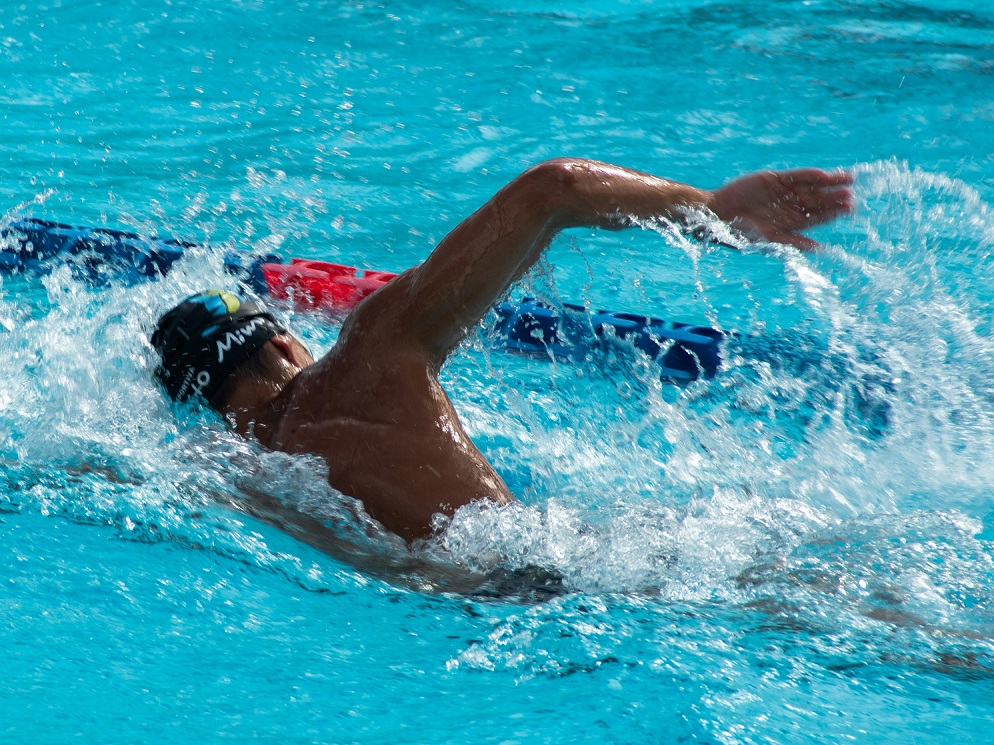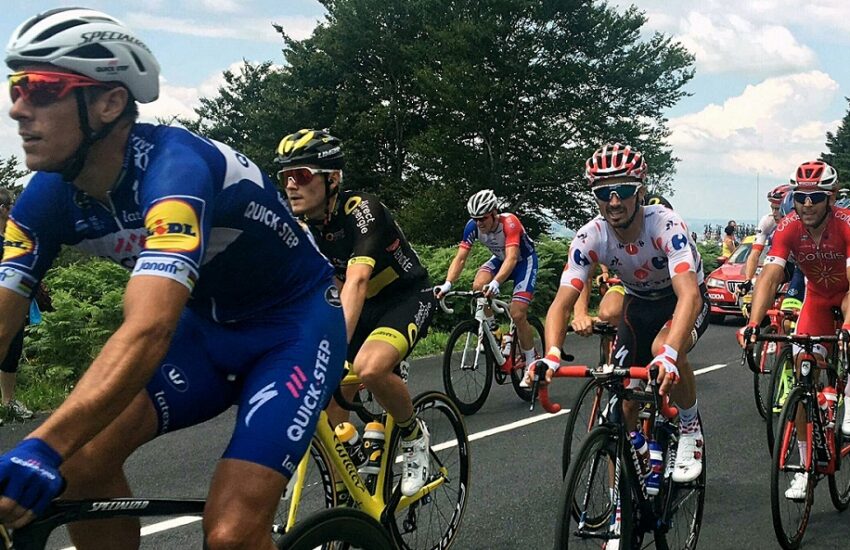Swimming and cycling are both popular forms of aerobic exercise that offer numerous health benefits, including weight loss. However, their effectiveness can vary depending on factors such as intensity, duration, individual fitness level, and personal preferences. In this detailed comparison, we will explore the physiological mechanisms behind each activity, their impact on calorie expenditure, muscle engagement, joint health, cardiovascular benefits, and overall suitability for weight loss goals. Mohit Tandon from Chicago suggested which is the best exercise for weight loss? Swimming vs Cycling :
1. Calorie Burn
Swimming:
Swimming is a full-body workout that engages multiple muscle groups simultaneously. The amount of calories burned during swimming depends on several factors, including the stroke technique, intensity, and duration of the workout. On average, a person weighing around 155 pounds (70 kg) can burn approximately:
- Moderate-intensity swimming: Around 233 calories in 30 minutes.
- Vigorous-intensity swimming: Up to 409 calories in 30 minutes.
The calorie burn can vary significantly based on factors such as stroke style (freestyle, breaststroke, butterfly, backstroke), speed, and efficiency in the water. For instance, more vigorous strokes like butterfly and freestyle typically burn more calories per minute than slower strokes like breaststroke.
Cycling:
Accordingly Mohit Tandon, Cycling primarily targets the lower body muscles, including the quadriceps, hamstrings, calves, and glutes. The number of calories burned while cycling depends on factors such as speed, resistance (if outdoors), terrain (if cycling outdoors), and intensity of the workout. For a person weighing around 155 pounds (70 kg), cycling can burn approximately:
- Moderate-intensity cycling (12-14 mph): Around 298 calories in 30 minutes.
- Vigorous-intensity cycling (more than 14 mph): Up to 372 calories in 30 minutes.
The calorie burn in cycling can vary widely based on whether you are cycling on flat ground, uphill, or using a stationary bike with resistance settings. High-intensity cycling, such as interval training, can significantly increase calorie expenditure due to elevated heart rate and increased metabolic demand. – Mohit Tandon Chicago
2. Muscle Engagement
Swimming:
Swimming engages nearly all major muscle groups in the body, making it a comprehensive full-body workout. The primary muscles involved include:
- Upper body: Deltoids (shoulders), latissimus dorsi (back), pectorals (chest), triceps (arms), and biceps (arms).
- Core: Abdominals (abs), obliques (side abdominals), and erector spinae (lower back).
- Lower body: Quadriceps (front of thighs), hamstrings (back of thighs), gluteal muscles (buttocks), and calf muscles. – Swimming vs Cycling: Which is the best exercise for Weight loss

Surely, Different swimming strokes emphasize different muscle groups. For example:
- Freestyle and butterfly strokes predominantly engage the upper body and core.
- Breaststroke and backstroke involve more of the legs and core muscles.
Cycling:
Cycling primarily targets the lower body muscles, including:
- Quadriceps: Front of the thighs, responsible for extending the knee.
- Hamstrings: Back of the thighs, responsible for bending the knee.
- Calves: Muscles of the lower leg, responsible for ankle movement.
- Gluteal muscles: Buttocks, providing power and stability during pedaling.
While cycling is focused on the lower body, it also engages the core muscles to stabilize the body and maintain proper posture, especially during intense or uphill cycling. Additionally, gripping the handlebars and maintaining balance also recruits muscles in the arms and shoulders to a lesser extent.
3. Impact on Joints
Swimming:
Swimming is a low-impact exercise, which means it places minimal stress on the joints. The buoyancy of water supports the body, reducing the impact on bones, muscles, and connective tissues. This makes swimming an excellent choice for individuals with joint issues, arthritis, or those recovering from injuries. The smooth, fluid movements in water also promote flexibility and range of motion without putting strain on joints.
Cycling:
Cycling is generally low-impact compared to activities like running or jumping, but it can still exert stress on certain joints, particularly the knees, hips, and lower back. The impact can vary depending on factors such as bike fit, terrain (e.g., cycling uphill or on rough surfaces), and pedaling technique. Proper bike fit and adjusting the saddle height can help reduce strain on joints and improve overall comfort during cycling sessions. – Mohit Tandon Chicago
4. Intensity and Heart Rate
Swimming:
Swimming allows for a wide range of intensity levels depending on the stroke, speed, and effort exerted. The heart rate response during swimming can vary from moderate to vigorous intensity, depending on factors such as stroke technique and swimming pace. For example:
- Freestyle or butterfly strokes performed at a faster pace can elevate heart rate and increase cardiovascular endurance.
- Slower strokes like breaststroke or backstroke may provide a more moderate-intensity workout.
Interval training in swimming, where periods of high-intensity swimming are alternated with rest or lower-intensity swimming, can be an effective way to improve cardiovascular fitness and burn calories efficiently.
Cycling:
Cycling offers excellent opportunities for varying intensity levels, from leisurely rides to high-intensity intervals. The heart rate response during cycling depends on factors such as cycling speed, resistance (if outdoors), and terrain. Key considerations include:
- Uphill cycling or riding against resistance can elevate heart rate and increase the metabolic demand, leading to greater calorie expenditure.
- Interval training on a stationary bike or outdoor cycling can effectively improve cardiovascular fitness, enhance endurance, and promote weight loss. – Mohit Tandon Chicago
5. Environmental Considerations
Swimming:
Swimming requires access to a pool or open water, which may not be readily available to everyone. Indoor pools offer a controlled environment for year-round swimming, while outdoor swimming depends on weather conditions and access to safe swimming areas. Swimming in open water, such as lakes or oceans, provides additional challenges and benefits, including varying water temperatures and currents.
Cycling:
Cycling can be performed outdoors on roads, trails, or bike paths, providing opportunities for exploring new routes and enjoying natural surroundings. Indoor cycling on stationary bikes offers convenience, climate control, and the ability to track performance metrics such as distance, speed, and calorie burn. The choice between indoor and outdoor cycling depends on personal preference, weather conditions, and access to safe cycling routes.

6. Physiological Benefits
Swimming:
Beyond weight loss, swimming offers numerous physiological benefits, including:
- Cardiovascular health: Improves heart and lung function, enhances circulation, and lowers blood pressure.
- Muscular strength and endurance: Builds strength in the upper body, core, and legs, improving overall muscle tone and endurance.
- Flexibility and joint mobility: Promotes flexibility through a wide range of motion in the water, enhancing joint mobility and reducing stiffness.
- Stress relief and mental well-being: Swimming in water can promote relaxation, reduce stress levels, and improve mood due to the soothing effects of water and rhythmic movements.
Cycling:
Cycling also provides a range of physiological benefits, including:
- Cardiovascular fitness: Improves heart and lung function, increases aerobic capacity, and enhances overall cardiovascular health.
- Lower body strength and endurance: Builds strength in the legs, particularly the quadriceps, hamstrings, and calves, improving muscular endurance and power.
- Bone health: Weight-bearing nature of cycling can help strengthen bones, reducing the risk of osteoporosis and improving bone density.
- Mental well-being: Cycling outdoors can promote mental clarity, reduce stress levels, and enhance overall mood through exposure to nature and physical activity.
7. Practical Considerations
Swimming:
- Equipment: Requires access to a swimsuit, goggles, swim cap (optional), and appropriate swimwear. Additional equipment may include swim fins, kickboards, and pull buoys for training purposes.
- Access: Access to a swimming pool or open water (lake, ocean) is necessary. Indoor pools offer year-round swimming opportunities, while outdoor swimming depends on seasonal availability and safety considerations.
- Skill level: Basic swimming skills are essential for safety and effectiveness. Beginners may benefit from swimming lessons or guidance from a qualified swim instructor.
Cycling:
- Equipment: Requires a bicycle (road bike, mountain bike, or stationary bike), helmet (recommended for outdoor cycling), cycling shorts (optional for comfort), and appropriate cycling shoes. Additional equipment may include bike lights, reflective gear, and water bottles for hydration.
- Access: Can be performed outdoors on roads, bike paths, or trails, depending on local regulations and safety considerations. Indoor cycling can be done at gyms, fitness centers, or home with a stationary bike.
- Skill level: Basic cycling skills such as balancing, braking, and shifting gears are necessary for safe and effective cycling. Beginners may benefit from bike safety courses or guidance from experienced cyclists.
Conclusion
In conclusion, both swimming and cycling are effective exercises for weight loss and overall health improvement. The choice between swimming and cycling depends on individual preferences, accessibility, physical condition, and specific fitness goals. Here’s a summary of key points:
- Swimming is a full-body workout that engages multiple muscle groups simultaneously, offering a low-impact exercise option suitable for individuals with joint issues or injuries.
- Cycling primarily targets the lower body muscles and provides opportunities for varying intensity levels, making it an excellent choice for cardiovascular fitness and lower body strength.
To achieve weight loss effectively, consider factors such as calorie burn, muscle engagement, impact on joints, intensity levels
